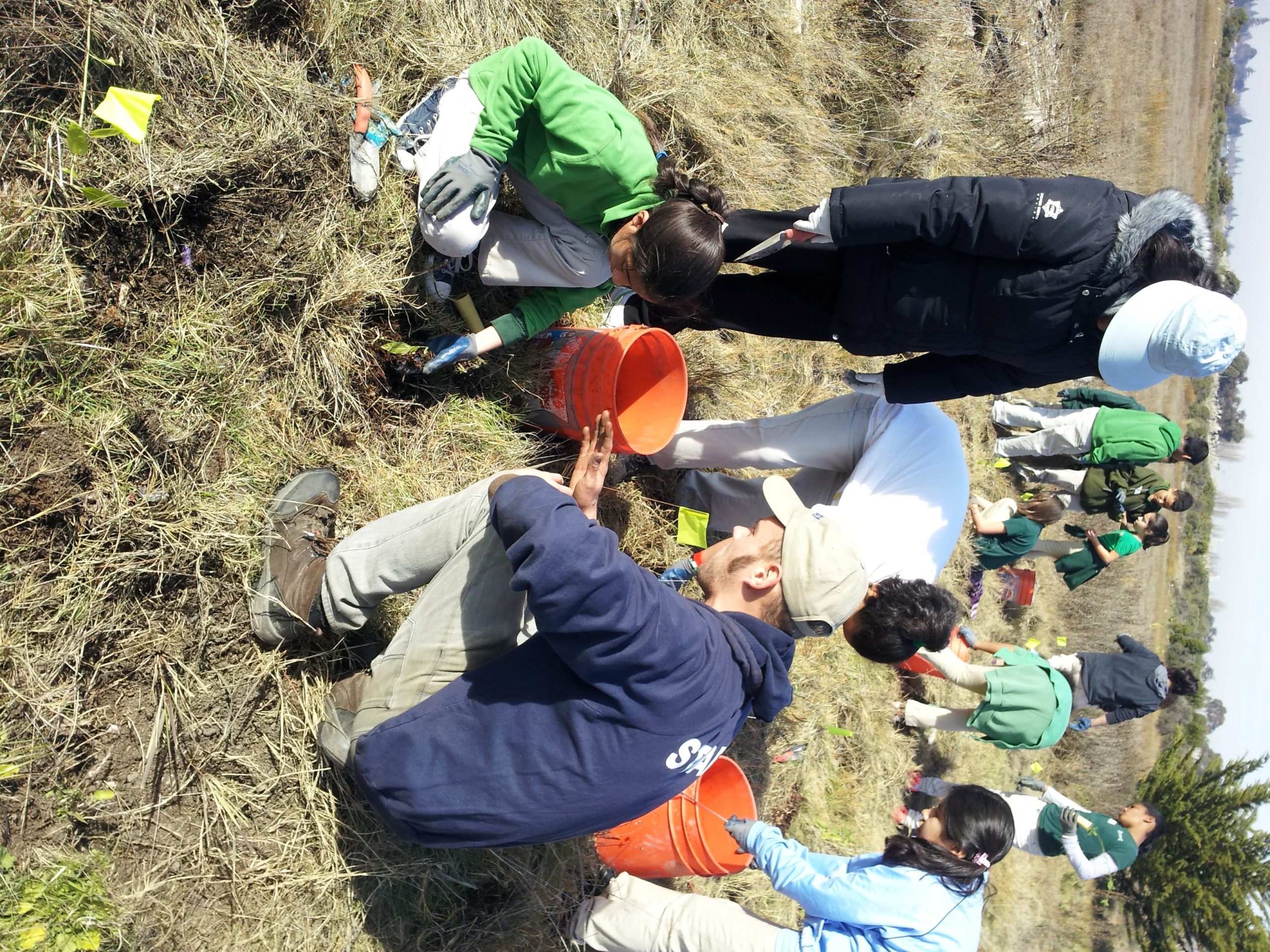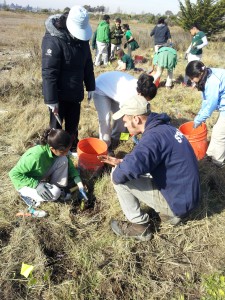Latino Children Planting the Future

 By Jose Gonzalez, NewsTaco
By Jose Gonzalez, NewsTaco
A cool San Francisco Bay morning is warming up on a marshy shore of the Martin Luther King Jr. Shoreline, part of the East Bay Regional Park District.
A couple of joggers and walkers are on the trail as birds flutter about in the bushes and gulls and geese fly overhead.
Soon enough I hear some voices in the distance, distinguishable to me in much the same way birders can tune in to specific bird calls. “It’s a class of 4th or 5th graders”, I thought to myself.
Led by their teacher, they come up the trail and are greeted by staff from Save the Bay, a regional organization committed to the protection of the San Francisco Bay.
The students are here to do some habitat restoration, but first it is time for introductions and some warm up activities.
Looking at the group of 5th graders, the majority of them are Latino—I can hear their various comments to each other in Spanish though they understand and readily respond to questions in English about marsh habitats, sharks, and food webs.
“This is the future”, I think to myself, highlighted by three key demographic statements. Since 2010, the majority of school children in California schools are Latino. Furthermore, undergraduate applications to the University of California system were dominated by Latinos for the first time while this year may close with Latinos being the largest single ethnic group in the state.
As the saying goes, “the future is now.”
After some introductions and a “marsh march”, the students make their way to a section marked by flags. A Save the Bay staff member demonstrates the process for planting native plant species.
The kids are eager, still full of energy even after playing an active game to calm and focus them.
But they take to the task with much enthusiasm. Most of the boys run off to several sections while many of the girls calmly and methodically replicate the process of planting: dig the hole, tap the plant out of its casing, line it with the ground, add dirt, add mulch, add water and yell “plant check” for validation of a job well done. Then it is on to planting the next sapling.
The work the students are doing is important for several reasons.
First of all, restoring marshes provides direct habitat to many species that rely on the bay wetlands as a home and migration stops. In restoring the marshes, it also helps bay communities with potential flooding, not to mention the enhanced recreational aspects of having access to beautiful parkland and functioning habitats for wildlife. All of this in the face of marshes at risk from climate change.
But the process also helps connect the students directly with the land and outdoors in proactive ways. And it is heartening to see a group of Latino students so actively engaged.
Earlier in the day I struck up a conversation in Spanish with a parent volunteer. “All but one of them knows Spanish” she said. “And the teachers, though not Latino, know Spanish as well.”
“It’s interesting because I think they thought they were going to pick up trash, but I like that they can come out here and learn about this place.”
I thought about that comment later on as the kids were antsy to start planting and one girl asked if she could just pick up trash—a helpful task, but it is good that kids get to engage with the environment hand- on beyond just litter cleanup, and to engage with it beyond as a lecture or presentation piece. I am reminded of how the writer Richard Louv put it: let them climb trees.
I introduced myself to several students. I noticed that in speaking Spanish to them, their demeanor would change at times—hard to exactly say but it seemed a bit more respectful—con respeto”. Throughout the morning I noticed some of the boys I checked in with would look around to see if I was watching. I would give them a nod, con respeto.
As I left I asked one student what was something that stuck with him about the activities. He responded “how we filled up part of the bay to make houses for people”.
“And what do you thing about that?” I asked.
“Well, people need houses, but animals too.”
The seedlingss the kids were planting are the future for a healthy marsh habitat—sorely needed homes for the animals. But so too are these kids the sorely needed future—a future that is here now taking care of the natural environment, engaging in its conservation—con respeto.
[Photo by Jose Gonzalez]
